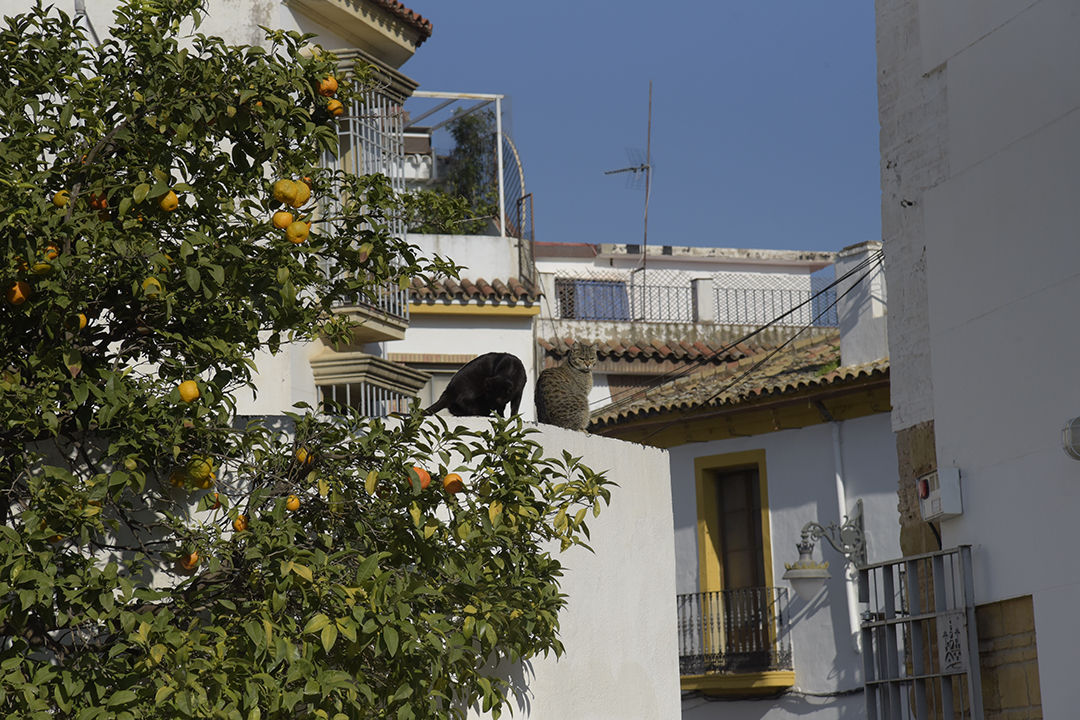Using historic worlds to inspire creative writing
Students studied abroad in Spain, used learnings to create new fictional world
Trent Hergenrader
Associate Professor Trent Hergenrader’s creative writing workshop class traveled to Spain to immerse themselves and be inspired by the country’s rich history.
Associate Professor Trent Hergenrader has led two study abroad trips to Portugal in the past, but this year he wanted to try something different. In January, he and 22 students traveled to Spain as part of a unique creative writing course. The class is called World Building Based on Historical Worlds, and the students visited Madrid, Toledo, Córdoba, Seville, and Granada for writing inspiration.
Hergenrader has been teaching World Building for 12 years, and the idea of combining a study abroad experience and a World Building course was sparked while he was re-reading The Lions of Al-Rassan on a camping trip.
“It was written by a Canadian author named Guy Gavriel Kay. He writes historical fantasy, but doesn’t include magic, monsters, or anything like that. Instead, he takes different regions of the world in different eras and uses those settings and the politics of the time to write fantasy novels. The Lions of Al-Rassan is set in the fictional equivalent of medieval Spain,” said Hergenrader. “I thought it could be a neat idea to bring students to Spain and have them do a world-building project based on that historical era.”
Spain was the perfect place for his class to visit because of the long history of intermingling cultures in the country, according to Hergenrader. In Spain, the remnants of medieval Jewish, Islamic, and Christian cultures overlap in various cities, and each culture has left behind an impressive physical imprint.
First-year film and animation student Miranda Lenaghan, from Rutherford, N.J., had never traveled abroad on her own before this trip. She described the experience of navigating new cities on her own as a little hectic, but that the stress paid off as she explored and found inspiration.
“One day, I went completely on my own to the Roman ruins of Italica in Santiponce, outside of Seville. It was a beautiful day and I just remember thinking, ‘this is so cool. I did this on my own!’ I was thinking about how awesome it was and how I could use that visit as inspiration for my writing,” said Lenaghan.
Miranda Lenaghan
Miranda Lenaghan and Willow Collopy found inspiration everywhere during their trip, and they particularly enjoyed meeting the many stray cats that scattered the cityscapes.
When it comes to world building, she explained, one can’t just rely on visual observation. The best, most immersive worlds result from an author’s understanding of the feelings, smells, sounds, and energy in a setting.
“Being in those spaces in Spain, you can just feel the power, wealth, and authority of these figures from hundreds of years ago,” said Lenaghan. “You can feel the blending of these different cultures, and it’s something you can take inspiration from in so many ways.”
When the students returned from Spain, their classroom time was dedicated to collaboratively building a new world, which they call Tel Rialis.
Students began with the basics, like what the terrain would look like, and then dug down into the deeper, more complex details like the different cultures in their world, the different traditions and religions, and more. Coming from a variety of different backgrounds, majors, and age groups themselves, each student brought new ideas to the table, expanded upon other’s thoughts, and worked as a team to finalize the details of their world.
Carlos Ortiz
As part of their coursework, students are tasked with creating faux artifacts from Tel Rialis, the fictional world they developed as a class. The students plan to show off their artifacts at Imagine RIT on April 29.
While a group project of this scale may seem daunting, Willow Collopy, a fifth-year mechanical engineering student from New City, N.Y., explained that collaborating was easier than one may think.
“Everyone’s imagining this world in their own head, so bringing it all together can get stressful, but we’ve also had the really cool opportunity to get to know each other outside of this project. We spent two weeks together in Spain and spent a lot of time on the bus together, so we got to know everyone as more than just teammates, but as actual friends,” they said.
While they initially enrolled in the course to help improve their technical writing skills, the course also taught them a valuable lesson in confidence.
“Being in this class has helped me figure out how to implement my own ideas in such a large group without feeling like I’m overpowering other people. It’s been a very good way to learn that kind of balance you need when there are so many voices at the table,” said Collopy.
Hergenrader believes that while there is no metric of measurement for it, one of the most valuable outcomes of the class is the emphasis on human connection that students leave with. Even though writing is typically considered an independent activity, Hergenrader puts forth the argument that an engaging world doesn’t have to be built or written about in solitude.
“When working together, you get to benefit from so many different people’s experiences and imaginations. It takes a little bit longer for that to all come together, but my job is basically to help students steer things along, to make sure everyone’s voice is heard, and to make sure that everyone has the space to contribute,” he said.
Hergenrader plans to lead this study abroad experience and creative writing course again in January 2024. Application details will be coming soon. For more information, email Hergenrader at wthgsl@rit.edu.












